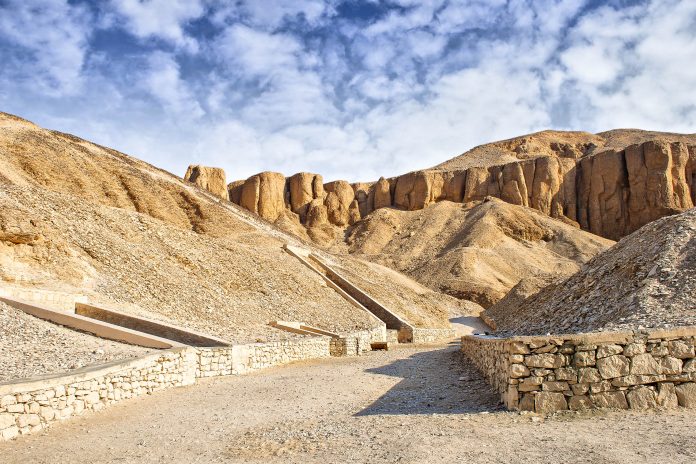Im mystischen Tal der Könige in Ägypten liegen die letzten Ruhestätten zahlreicher ägyptischer Herrscher. Der eindrucksvollen Pharaonen-Friedhof sorgt mit unterirdischer Architektur und spektakulären Wandmalereien bei jedem Besucher für Gänsehaut!
Das weltberühmte Tal der Könige liegt im ägyptischen Luxor in West-Theben, gegenüber dem Karnak-Tempel und zählt zu unseren Top 10 Sehenswürdigkeiten von Ägypten. Funde von Faustkeilen und anderen Steinwerkzeugen deuten darauf hin, dass das auf arabisch genannte Wadi Biban el-Muluk bereits in der Altsteinzeit vor über 2 Millionen Jahren von Menschen besiedelt war.
Bis heute wurden 64 Gräber von Pharaonen aus den Jahren 1500 bis 1000 vor Christus entdeckt. Um ca. 1000 vor Christus führten Grabräuber auf der Suche nach Gold und anderen Schätzen gezielte Plünderungen durch und entwendeten viele der höchstwahrscheinlich vorhandenen Reichtümer. Etwa hundert Jahre später in der 22. Dynastie verordnete der damalige Herrscher Scheschonq I., die Mumien zu ihrem Schutz in anderen Gräbern zu verstecken, was bei den Forschern der Neuzeit zu einiger Verwirrung führte.
Inhaltsverzeichnis
BILDER: Tal der Könige
Berühmteste Gräber im Tal der Könige
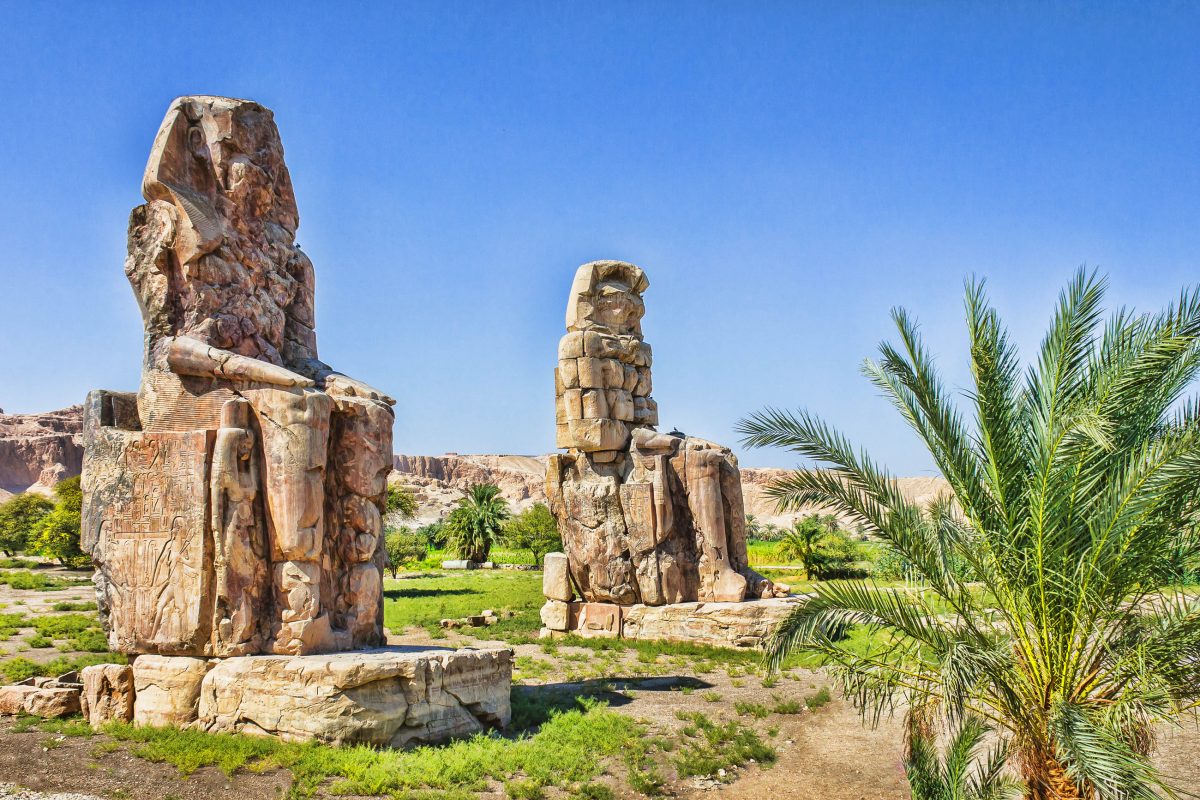
Das erste Grab im Tal der Könige war jenes des Thutmosis I. Die gewaltige Tempelanlage seiner Tochter Hatschepsut liegt gleich in der Nähe hinter einem Hügel. Auch sie selbst und ihr Sohn Thutmosis III. wurden im Tal der Könige bestattet.
Eines der berühmtesten ist sicherlich das weitgehend unversehrte Grab des Jungpharaos Tutanchamun. Es wurde 1922 vom Archäologen Howard Carter entdeckt und zählt bis heute zu den bedeutendsten Funden der ägyptischen Geschichte.
Von Ramses I., dem Begründer der 19. Dynastie gibt es zwar ein Grab, jedoch keine Mumie. Der ihm nachfolgende Herrscher Sethos I wurde zwar hier bestattet. Sein Grab zählt zu den größten und schönsten, ist aber aus Gründen der Erhaltung seit Jahren geschlossen. Ebenfalls als eines der schönsten Gräber im Tal der Könige gilt jenes von Nefertari, der Lieblingsfrau von Ramses II. Das seiner Söhne wird mit 150 bekannten Kammern übrigens als größtes Grab im Tal der Könige betitelt.
Ramses XI. ließ als letzter Herrscher seine Grabstätte dort errichten, ließ sich jedoch nicht im Tal der Könige bestatten. Grabräuber trieben hier bereits ihr Unwesen und viele Gräber sind ihnen bereits zum Opfer gefallen.
Besuch im Tal der Könige

Eine kleine Bahn bringt die Besucher vom Parkplatz zu den Gräbern und lässt sie im Abstand von etwa 100 Metern aussteigen. Besichtigt werden können nicht alle Gräber auf einmal. Um sie vor dem Verfall zu schützen werden sie in regelmäßigen Abständen für Besucher geschlossen. Für die wichtigsten Gräber (Sethos I., Tutanchamun und Nefertari im Tal der Königinnen) ist angedacht, eine Kopie zur Besichtigung anzufertigen.
Die meisten Fundstücke aus den Gräbern wurden entfernt und sind zum Beispiel im Nationalmuseum in Kairo zu bewundern, hin und wieder ist noch ein steinerner Sarkophag vorhanden. Doch alleine die uralten Korridoren und mystischen Pfeilerhallen muss man gesehen haben – sie sind über und über mit fantastisch erhaltenen Wandmalereien in der farbenprächtigen ägyptischen Bilderschrift bedeckt!
Besichtigungs-Tipps für das Tal der Könige
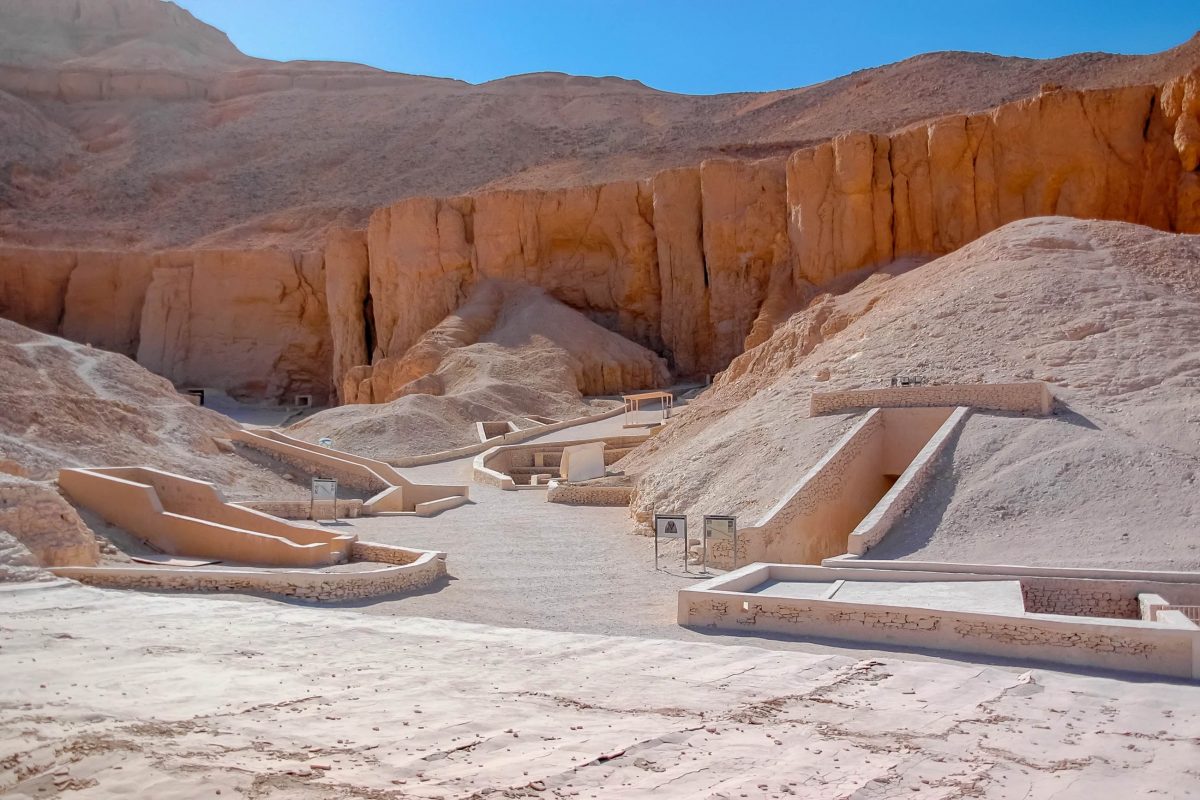
- Der Eintritt gilt für den Besuch von drei Gräbern, für das Grab des Tutanchamun muss extra bezahlt werden. Dabei sieht man dort nicht sehr viel mehr als in anderen Gräbern – Wandmalereien und einen Sarkophag.
- Fotografieren ist ohne Kauf der Fotogenehmigung nur außerhalb der Gräber erlaubt. Grabwächter achten auf die Einhaltung der Regeln.
- Touren zum Tal der Könige starten meist noch vor Sonnenaufgang. Auch wenn die Temperatur im Tal auf bis zu 40°C klettert, bei Dunkelheit kann es noch empfindlich kalt sein! Zur Sicherheit, Jacke mitnehmen!
- Souvenir-Verkäufer sehen in den Touristenmassen leichte Beute und können leicht als aufdringlich empfunden werden.
- Um den Menschenmengen zu entgehen und die Schönheit der Gräber in Ruhe genießen zu können, empfiehlt sich der Besuch von etwas abseits gelegenen, weniger berühmten aber ebenso spektakulären Gräbern, wie zum Beispiel des Eje- oder Ay-Grabes. Nach Karten dafür muss man extra fragen.
Hatschepsut aus der Vogelperspektive
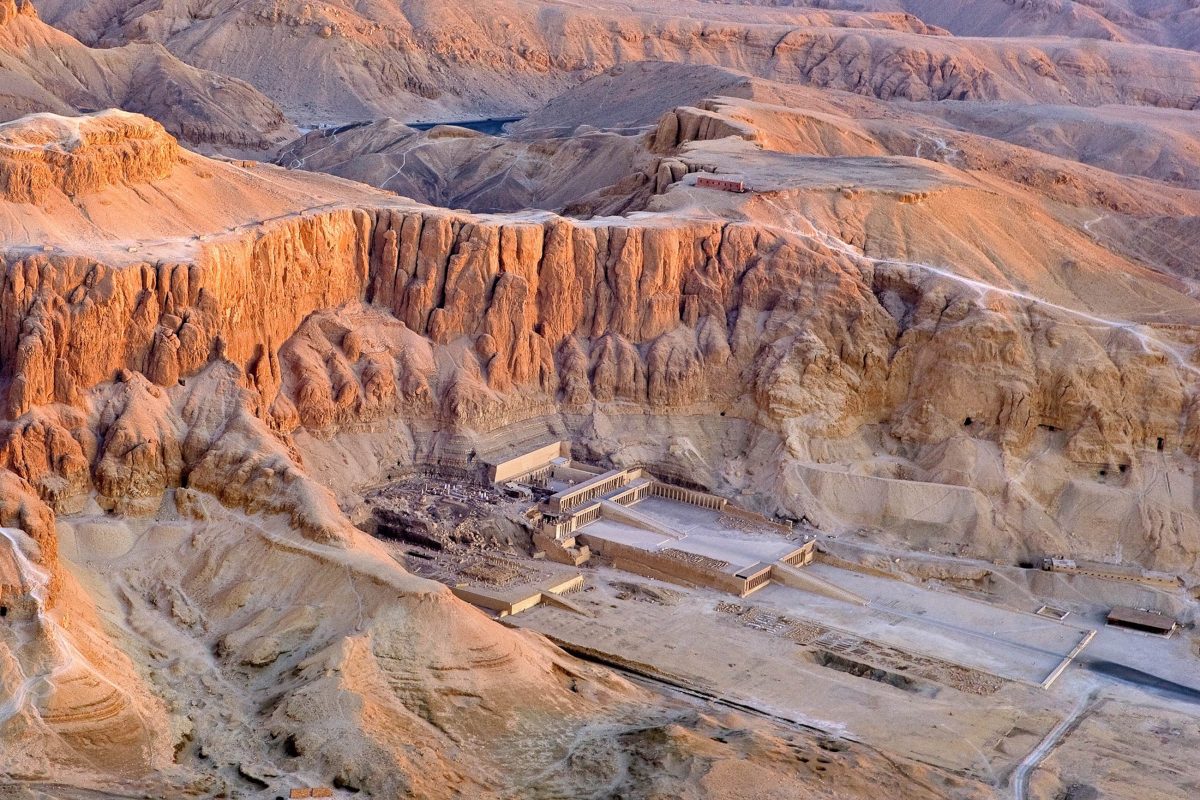
Wem es Zeit und Kondition erlauben, sollte unbedingt den Felsenhügel erklimmen und einen Blick auf die andere Seite hinab werfen. Die Chance auf einen unvergesslichen Blick von oben auf den eindrucksvollen Tempel der Hatschepsut bekommt man so schnell nicht wieder!
Erforschung und touristische Erschließung
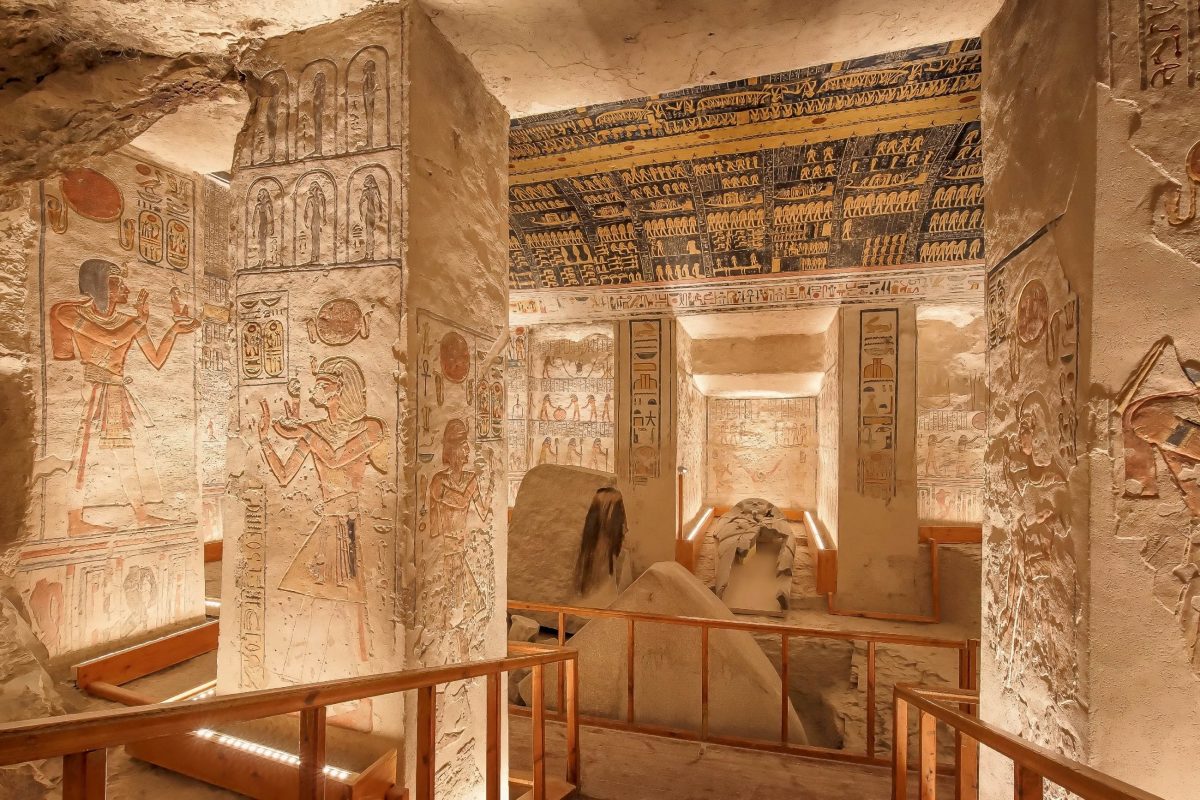
Die ersten Europäer kamen Anfang des 18. Jahrhunderts in das Tal und deuteten es bereits richtig als Begräbnisstätte. Damals waren bereits einige Gräber ganz oder zumindest teilweise schon seit der Antike offen (und beraubt). Die systematische Öffnung und Erforschung von Gräbern begann mit der Ägypten-Expedition Napoleons Anfang des 19. Jahrhunderts und dauert bis heute an.
Was bedeutet KV 1?
Alle lokalisierten Gräber im Wadi Biban el-Muluk erhalten die Bezeichnung KV für King’s Valley und eine Nummer. Dieses System wurde von John Gardner Wilkinson im Jahr 1827 begonnen, der damals einfach jedes Grab, das er fand, per Pinsel nummerierte. Heute wird diese Katalogisierung auch für den Tourismus verwendet.
Obwohl die meisten Gräber im Lauf der Jahrhunderte von Grabräubern geplündert wurden, lieferten die letzten Ruhestätten der ägyptischen Herrscher den heutigen Archäologen wertvolle Einblicke in die damalige Zeit ebenso wie einige bedeutende Funde.
Weiterführende Links:

